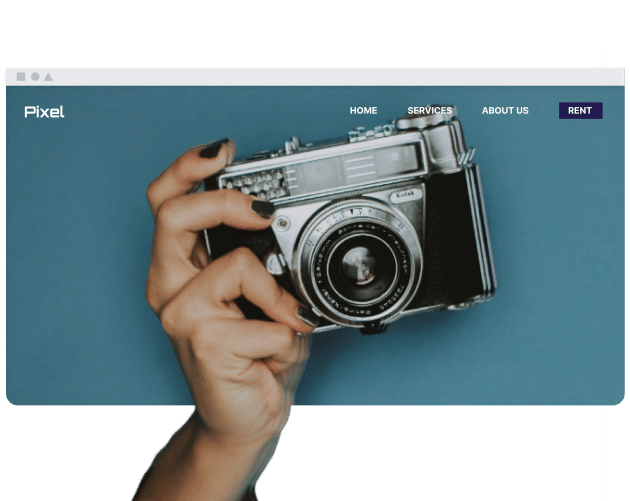Quais são os benefícios de um post de blog com entrevista para os leitores?
Postagens de blog baseadas em entrevistas podem fornecer aos leitores insights exclusivos que podem não ser acessíveis por outros meios, embora você deva escolher as pessoas certas para entrevistar.
Em muitos casos, os leitores podem preferir ler uma postagem de blog com entrevista. Esses tipos de conteúdo podem oferecer canais para estabelecer conexões pessoais, o que pode influenciar o conhecimento da marca e o engajamento do leitor.
Alinhar-se com um especialista em sua área pode afetar a maneira como os outros veem sua credibilidade.
Interatividade: Envolva seus leitores no processo de publicação do blog. Incentive-os a deixar comentários e fazer perguntas, e a continuar a conversa nas redes sociais posteriormente.
Quais são os benefícios para mim?
Considere usar posts de entrevistas no blog como uma oportunidade de networking. Use insights exclusivos para que os usuários obtenham algo diferente do que poderiam encontrar em outros lugares online também.
Estruture seu conteúdo para que os pontos do entrevistador sejam mais interessantes de ler do que fatos comuns.
Colaboração: Explore a possibilidade de cocriação de conteúdo com o entrevistado. Faça isso para potencialmente aproveitar o público dele, especialmente se ele tiver uma plataforma maior que a sua.
Como criar uma postagem de blog de entrevista atraente?
Criar uma postagem de blog com entrevista requer pensar em cada um dos seguintes itens.
- Planejamento: Pense cuidadosamente sobre o que você quer abordar na entrevista. Pesquise o máximo que puder sobre o assunto; acesse seus perfis de mídia social e sites, e examine trabalhos publicados anteriormente. Faça uma lista de perguntas e pontos de discussão prioritários, mas evite ser muito rígido.
- Entrevista: Certifique-se de abordar todos os pontos-chave na entrevista. Faça perguntas complementares se você tiver novos insights ou quiser que alguém esclareça o que está dizendo. Seja transparente com o entrevistado sobre onde você publicará o conteúdo da entrevista também.
- Apresentando informações: Apresente suas informações de forma atraente que envolva o público. Considere o tipo de formato que funcionaria melhor para o seu post de blog; se necessário, experimente diferentes variações.
A edição é crucial: Edite a postagem do blog depois de juntar tudo para garantir que as palavras fluam como deveriam. Remova erros gramaticais e certifique-se de não alterar o significado da entrevista.
Devo apresentar a entrevista como perguntas e respostas ou como uma narrativa?
Depende do seu público, tom de voz da marca e do tipo de entrevista. Perguntas e respostas são mais diretas e legíveis, mas podem não ter profundidade. Por outro lado, entrevistas em estilo narrativo são ideais para contar histórias e adicionar contexto – mas seu público pode não querer ler este tipo de conteúdo.
A duração da entrevista também desempenhará um papel. Frequentemente, entrevistas mais curtas são melhores como perguntas e respostas. Por outro lado, você pode querer usar narrativas para tópicos mais aprofundados.
Preferências do leitor: Considere os comportamentos e interesses do seu público e escreva suas postagens de entrevista com base nessas informações.
Como posso tornar a entrevista fácil de ler e acompanhar?
Aqui estão algumas sugestões para melhorar o fluxo da sua postagem de entrevista no blog:
- Use uma linguagem clara estrutura de títulos, com H2s e H3s utilizados em todo o texto.
- Certifique-se de que os parágrafos sejam breves e objetivos. Se a pessoa disse muitas palavras de preenchimento, você pode usar "..." para conectar duas partes.
- Utilize conteúdo visual em toda a postagem para torná-la mais envolvente, mas mantenha-o relevante para o seu conteúdo.
- Implemente citações em destaque para facilitar a leitura e destacar as citações principais para o leitor.
Legibilidade: Considere o uso de ferramentas de pontuação de leitura para garantir que seu conteúdo seja legível para seu público.
Conclusão
Postagens de blog de entrevistas podem ser úteis para ajudar você a alcançar um público maior e dar aos existentes uma visão única – mas você precisa considerar vários fatores antes de começar. Planejar suas entrevistas com antecedência é crucial, assim como fazer as perguntas necessárias ao se sentar com a pessoa.
Antes de conduzir entrevistas, você também deve escolher entrevistados que correspondam à sua marca. Determine como você apresentará as informações que eles dizem e, se necessário, experimente diferentes opções de formatação.

